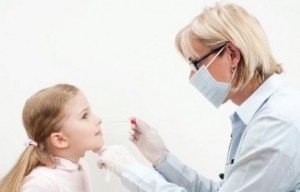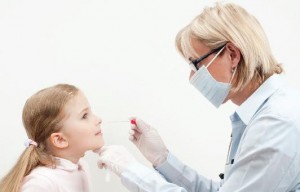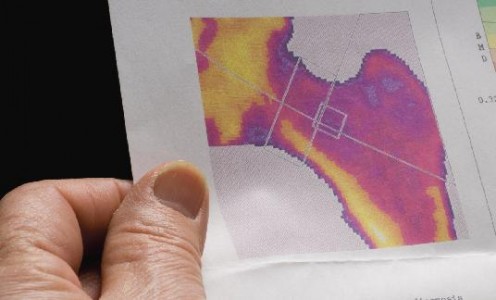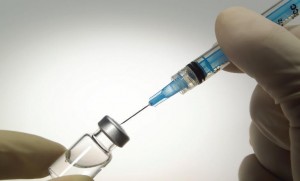Introduction: The aim of this review is to emphasise the burden and transmission of nosocomial seasonal influenza, discuss the influenza vaccine and the need for annual influenza vaccination of all healthcare workers, discuss common attitudes and misconceptions regarding the influenza vaccine among healthcare workers and means to overcome these issues, and highlight the need for mandatory annual influenza vaccination of healthcare workers. Methods: A literature review was carried out; Medline, PubMed and The Cochrane Collaboration were searched for primary studies, reviews and opinion pieces pertaining to influenza transmission, the influenza vaccine, and common attitudes and misconceptions. Key words used included “influenza”, “vaccine”, “mandatory”, “healthcare worker”, “transmission” and “prevention”. Results: Seasonal influenza is a serious disease that is associated with considerable morbidity and mortality and contributes an enormous economic burden to society. Healthcare workers may potentially act as vectors for nosocomial transmission of seasonal influenza. This risk to patients can be reduced by safe, effective annual influenza vaccination of healthcare workers and has been specifically shown to significantly reduce morbidity and mortality. However, traditional strategies to improve uptake consistently fail, with only 35 to 40% of healthcare workers vaccinated annually. Mandatory influenza vaccination programs with medical and religious exemptions have successfully increased annual influenza vaccination rates of healthcare workers to >98%. Exemption requests often reflect misconceptions about the vaccine and influenza, and reflect the importance of continuous education programs and the need for a better understanding of the reasons for compliance with influenza vaccination. Conclusion: Mandatory annual influenza vaccination of healthcare workers is ethically justified and, if implemented appropriately, will be acceptable. Traditional strategies to improve uptake are minimally effective, expensive and inadequate to protect patient safety. Therefore, low voluntary influenza vaccination rates of healthcare workers leave only one option to protect the public: mandatory annual influenza vaccination of healthcare workers.
Introduction
Each year, between 1,500 and 3,500 Australians die from seasonal influenza and its complications. [1] The World Health Organization (WHO) estimates that seasonal influenza affects five to fifteen per cent of the population worldwide annually, with an associated three to five million cases of serious illness and 250,000-500,000 deaths. [2] In Australia, it is estimated that seasonal influenza causes 18,000 hospitalisations and over 300,000 general practitioner (GP) consultations every year. [3] Nosocomial seasonal influenza is associated with considerable morbidity and mortality among the elderly, neonates, immuno-compromised and patients with chronic diseases. [4] The most effective way to reduce or prevent nosocomial transmission of seasonal influenza is annual influenza vaccination of all healthcare workers. [5,6] The Centre for Disease Control and Prevention (CDC) has recommended annual influenza vaccination of all healthcare workers since 1981, and the provision and administration of the vaccine to healthcare workers at the work site, free of charge, since 1993. [7] Despite this, only 35% to 40% of healthcare workers are vaccinated annually. [8]
Transmission of seasonal influenza
The influenza virus attaches and invades the epithelial cells of the upper respiratory tract. [8] Viral replication in these epithelial cells leads to pro-infl ammatory cytokines, and necrosis of epithelial cells. [8] Influenza is primarily transmitted from person to person by droplets that are generated when an infected person breathes, coughs, sneezes and speaks. [8] These droplets settle on the mucosal surfaces of the upper respiratory tract of susceptible persons; thus transmission of influenza primarily occurs in those who are near the infected person. [8]
The influenza vaccine
The influenza vaccines currently available in Australia are inactivated, split virion or subunit vaccines, produced using viral strains propagated in fertilised hens’ eggs. [9] The inactivated virus is incapable of replication inside the human body, and thus incapable of causing infection. [10] Influenza vaccines are trivalent, i.e. they protect against three different strains of influenza. [9] As influenza viruses are continually subject to antigenic change, annual adaptation of the influenza vaccine is needed to ensure the vaccine provides protection against the virus strains likely to be circulating during the influenza season. [9] The composition of the influenza vaccine in 2011 covered pandemic H1N1 2009 (swine flu), H3N2 and B strains of influenza. [11] Influenza vaccines are included in the Australian National Immunisation Program only after evaluation of their quality, safety, effectiveness and cost-effectiveness for its intended use in the Australian population. [9] The only common adverse effect of the influenza vaccine is minor injection site soreness for one to two days. [10] Influenza vaccine effectiveness depends on the age and immune status of the individual being vaccinated, and on the match between the strains included in the vaccine and those strains circulating in the community. [12] The influenza vaccine is 70 to 90% effective in preventing influenza infection in healthy individuals under 65 years of age; the majority of healthcare workers fall into this category. [12] Influenza vaccination has been shown to be 88% effective in preventing laboratory-confirmed influenza in healthcare workers. [13]
The need for annual influenza vaccination
Transmission of influenza has been reported in a variety of healthcare settings and healthcare workers may often be implicated in the outbreaks. [13] Healthcare workers are at an increased risk of acquiring seasonal influenza because of exposure to the virus in both the healthcare and community settings. [13] However, simply staying home from work during symptomatic illness is not an effective strategy to prevent nosocomial transmission of seasonal influenza. [10] The incubation period ranges from one to four days; the contagious period begins before symptoms appear, and the virus may be shed for at least one day prior to symptomatic illness. [4,10] Less than 50% of people show classic signs of influenza; asymptomatic healthcare workers may fail to recognise that they are infected, yet can shed the virus for five to ten days. [13,14] Symptomatic healthcare workers also often continue to work despite the presence of symptoms of influenza. [10,15] In one study, 23% of serum samples from healthcare workers contained specific antibody suggesting seasonal influenza infection during a single season; however, 59% of those infected could not recall influenza-like illness and 28% were asymptomatic. [13] The direct implication of this fact is that healthcare workers themselves may potentially act as vectors for nosocomial transmission of seasonal influenza to patients who are at increased risk of morbidity and mortality from seasonal influenza. [10] Many of these patients do not mount an appropriate immune response to influenza vaccination, making vaccination of healthcare workers especially important. [16] Only 50% of residents in long-term care settings develop protective influenza vaccinationinduced antibody titres. [17] Influenza vaccination of healthcare workers may reduce the risk of seasonal influenza outbreaks in all types of health care settings and has been specifically shown to significantly reduce morbidity and mortality. [12] A randomised controlled trial evaluating the effect of annual influenza vaccination of healthcare workers found that it was significantly associated with a 43% reduction in influenza-like illness and a 44% reduction in mortality among geriatric patients in long-term care settings. [12] Furthermore, an algorithm evaluating the effect of annual influenza vaccination of healthcare workers on patient outcomes predicted that if all healthcare workers in healthcare settings were vaccinated annually with the influenza vaccine, then approximately 60% of patient influenza infections could be prevented. [18]
Although a number of factors contribute to the overall burden of seasonal influenza, the economic burden to society results primarily from the loss of working time/productivity associated with influenza-related work absence and increased use of medical resources required to treat patients with influenza and its complications. [19] Typically, the indirect costs associated with loss of working time/productivity due to illness account for the greater proportion (>80%) of the economic burden of seasonal influenza. [19] One study reported those healthcare workers who received the influenza vaccine had 25% fewer episodes of respiratory illness, 43% fewer days of sickness absenteeism due to respiratory illness and 44% fewer visits to physicians’ offices for upper respiratory illness than those who received placebo. In a review of studies that confirmed seasonal influenza infection using laboratory evidence, the mean reported sickness absenteeism per episode of seasonal influenza ranged from 2.8 to 4.9 days for adults. [19] Furthermore, a retrospective cohort study investigating the association between influenza vaccination of emergency department healthcare workers and sickness absenteeism found that a significantly larger proportion took sick leave because of influenza-like illness in the vaccine non-recipient group (55% against 30.3%). [20]
Attitudes and misconceptions
Self-protection, rather than protection of patients, is often the dominant motivation for influenza vaccination. Many healthcare workers report they would be more willing to be vaccinated against pandemic influenza, which is perceived to be more dangerous than seasonal influenza. [15] One study found that the most popular reason (100% of those surveyed) for receiving the influenza vaccine among healthcare workers was self-protection against influenza. [21] Seventy percent of healthcare workers were also concerned about their colleagues, patients and community in preventing cross-infection. [21] Popular reasons mentioned for not receiving the influenza vaccine included “trust in, or the wish to challenge natural immunity”, “physician’s advice against the vaccine for medical reasons”, “severe localised effects from the vaccine” and “not believing the vaccine to have any benefit.”[21] A multivariate analysis of a separate study revealed that “older age”, “believing that most colleagues had been vaccinated” and “having cared for patients suffering from severe influenza” were significantly associated with compliance with influenza vaccination, with the main motivation being “individual protection”. [22] Lack of information as to effectiveness, recommended use, adverse effects of the vaccine and composition, again reflect the importance of continuous education programs and the need for a better understanding of the reasons for compliance with influenza vaccination. [22]
Major issues
Analysis of interviews with healthcare workers indicated that successfully adding mandatory annual influenza vaccination to the current policy directive would require four major issues to be addressed: providing and communicating a solid evidence base supporting the policy directive; addressing the concerns of staff about the influenza vaccine; ensuring staff understand the need to protect patients; and addressing the logistical challenges of enforcing an annual vaccination campaign. [23] A systematic review of influenza vaccination campaigns for healthcare workers revealed that a combination of education or promotion and improved access to the influenza vaccine yielded greater increases in coverage among healthcare workers. [24] Campaigns involving legislative or regulatory components such as mandatory declination forms achieved higher rates than other interventions. [24]
Influenza vaccination is currently viewed as a public health initiative focused on personal choice of employees. [12] However, a shift in the focus of vaccination strategy is appropriate – seasonal influenza vaccination of healthcare workers is a patient health and safety initiative. [12] In 2007, the CDC Advisory Committee on Immunisation added a recommendation that health care settings implement policies to encourage influenza vaccination of healthcare workers with informed declination. [25] A switch from influenza vaccination of healthcare workers on a voluntary basis to a mandatory policy should be considered by all public-health bodies. [4]
Mandatory annual influenza vaccination
Fifteen states in the USA now have laws requiring annual influenza vaccination of healthcare workers, although they permit informed declination; and at least five states require it of all healthcare workers. Many individual medical centres have instituted policies requiring influenza vaccination, with excellent results. [26]
A year-long study of approximately 26,000 employees at BJC HealthCare found that a mandatory influenza vaccination program successfully increased vaccination rates to >98%. [27] Influenza vaccination was made a condition of employment for all healthcare workers, with those still not vaccinated or exempted, terminated after one year. [27] Medical or religious exemption could be sought, including hypersensitivity to eggs, prior hypersensitivity reaction to influenza vaccine, and history of Guillain-Barre syndrome. [27] Exemption requests often reflected misconceptions about the vaccine and influenza. [27] Several requests cited chemotherapy or immuno-compromise as a reason not to get the influenza vaccine, even though these groups are at high risk for complications from influenza and are specifically recommended to be vaccinated. [27] Several requests cited pregnancy, although the influenza vaccine is recommended during pregnancy. [27]
Similarly, a five-year study of mandatory influenza vaccination of approximately 5,000 healthcare workers from Virginia Mason Medical Centre sustained influenza vaccination rates of more than 98% during 2005-2010. [28] Less than 0.7% of healthcare workers were granted exemption for medical or religious reasons and were required to wear a mask at work during influenza season, and less than 0.2% of healthcare workers refused vaccination and leftthe centre. [28]
Conclusion
Mandatory annual influenza vaccination of healthcare workers raises complex professional and ethical issues. However, the arguments in favour are clear. 1. Seasonal influenza is a serious and potentially fatal disease, associated with considerable morbidity and mortality among the elderly, neonates, immuno-compromised and patients with chronic diseases. [4] 2. The influenza vaccine has been evaluated for safety, quality, effectiveness and cost-effectiveness for its intended use in the Australian population. [9] 3. Healthcare workers themselves may potentially act as vectors for nosocomial transmission of seasonal influenza and this risk to patients can be reduced by safe, effective annual influenza vaccination of healthcare workers. [10] 4. The contagious period of seasonal influenza begins before symptoms appear and the virus may be shed for at least one day prior to symptomatic illness. [14] 5. Influenza vaccination of healthcare workers may reduce the risk of seasonal influenza outbreaks in all types of health care settings and has been specifically shown to significantly reduce morbidity and mortality. [12] 6. Seasonal influenza contributes an enormous economic burden to society from the loss of working time/productivity associated with influenza-related work absence and increased use of medical resources required to treat patients with influenza and its complications. [19] 7. Traditional strategies to improve uptake by healthcare workers consistently fail, with only 35% to 40% of healthcare workers vaccinated annually. [8] 8. Mandatory influenza vaccination programs with medical and religious exemptions have successfully increased annual influenza vaccination rates of healthcare workers to >98%. [27,28] 9. Exemption requests often reflected misconceptions about the vaccine and influenza, and reflect the importance of continuous education programs and the need for a better understanding of the reasons for compliance with influenza vaccination. [27, 22]
These facts suggest that mandatory annual influenza vaccination of healthcare workers is ethically justified and, if implemented appropriately, will be acceptable. [15] For this to occur, a mandatory program needs leadership by senior clinicians and administrators; consultation with healthcare workers and professional organisations; appropriate education; free, easily accessible influenza vaccine and adequate resources to deliver the program efficiently. It further requires provision for exemptions on medical and religious grounds and appropriate sanctions for those who refuse annual influenza vaccination, for example, requirement to wear a mask during influenza season, or termination of employment. [15] Healthcare workers accept a range of moral and other professional responsibilities, including a duty to protect patients in their care from unnecessary harm, to do good, to respect patient autonomy, and to treat all patients fairly. They also accept reasonable, but not unnecessary, occupational risk such as exposure to infectious diseases. [15] Vaccination is often seen as something that people have a right to accept or refuse. However, freedom to choose also depends on the extent to which that choice affects others. [15] In the healthcare settng, the autonomy of healthcare workers must be balanced against patients’ rights to protection from avoidable harm, and the moral obligation of healthcare workers not to put others at risk. [15] Mandatory annual influenza vaccination of healthcare workers is consistent with the right the public have to expect that healthcare workers will take all necessary and reasonable precautions to keep them safe and minimise harm. [15] Traditional strategies to improve uptake by healthcare workers are minimally effective, expensive, and inadequate to protect patient safety. Therefore, low voluntary influenza vaccination rates of healthcare workers leave only one option to protect the public: mandatory annual influenza vaccination of healthcare workers.
Conflicts of interest
None declared.
Correspondence
K Franks: kathryn.franks@my.jcu.edu.au
References
[1] Australian Bureau of Statistics. 3303.0 – Causes of death, Australia. 2007.
[2] World Health Organization. Fact sheet no. 211. Revised April 2009.
[3] Williams U, Finch G. Influenza specialist group – influenza fact sheet. Revised March2011.
[4] Maltezou H. Nosocomial influenza: new concepts and practice. Curr Opin Infect Dis.2008;21:337-43.
[5] Weber D, Rutala W, Schaff ner W. Lessons learned: protection of healthcare workers from infectious disease risks. Crit Care Med. 2010;38(8):306-14.
[6] Ling D, Menzies D. Occupation-related respiratory infections revisited. Infect Dis Clin North Am. 2010;24:655-80.
[7] Centre for Disease Control and Prevention. Influenza vaccination of healthcare personnel: recommendations of the healthcare infection control practices advisory committee and the advisory committee on immunization practices. MMWR Morb Mortal Wkly Rep. 2006;55:1-41.
[8] Beigel J. Influenza. Crit Care Med. 2008;36(9):2660-6.
[9] Horvath J. Review of the management of adverse effects associated with Panvax and Fluvax: fi nal report. In: Ageing DoHa, editor. 2011. p.1-58.
[10] McLennan S, Gillert G, Celi L. Healer, heal thyself: health care workers and the influenza vaccination. AJIC. 2008;36(1):1-4.
[11] Bishop J. Seasonal influenza vaccination 2011. In: Ageing DoHa, editor. Canberra 2011.
[12] Schaff ner W, Cox N, Lundstrom T, Nichol K, Novick L, Siegel J. Improving influenza vaccination rates in health care workers: strategies to increase protection for workers and patients. In: NFID, editors. 2004. p.1-19.
[13] Goins W, Talbot H, Talbot T. Health care-acquired viral respiratory diseases. Infect Dis Clin North Am. 2011;25(1):227-44.
[14] Maroyka E, Andrawis M. Health care workers and influenza vaccination. AJHP. 2010;67(1):25.
[15] Gilbert GL, Kerridge I, Cheung P. Mandatory influenza immunisation of health-care workers. Laninf. 2010;10:3-4.
[16] Carlson A, Budd A, Perl T. Control of influenza in healthcare settings: early lessons from the 2009 pandemic. Curr Opin Infect Dis. 2010;23:293-9.
[17] Lee P. Prevention and control of influenza. Southern Medical Journal. 2003;96(8):751-7.
[18] Ottenburg A, Wu J, Poland G, Jacobson R, Koenig B, Tilburt J. Vaccinating health care workers against influenza: the ethical and legal rationale for a mandate. AJPH. 2011;101(2).
[19] Keech M, Beardsworth P. The impact of influenza on working days lost: a review of the literature. TPJ. 2008;26(1):911-24.
[20] Chan SS-W. Does vaccinating ED health care workers against influenza reduce sickness absenteeism? AJEM. 2007;25:808-11.
[21] Osman A. Reasons for and barriers to influenza vaccination among healthcare workers in an Australian emergency department. AJAN. 2010;27(3):38-43.
[22] Takayanagi I, Cardoso M, Costa S, Araya M, Machado C. Attitudes of health care workers to influenza vaccination: why are they not vaccinated? AJIC. 2007;35(1):56-61.
[23] Leask J, Helms C, Chow M, Robbins SC, McIntyre P. Making influenza vaccination mandatory for health care workers: the views of NSW Health administrators and clinical leaders. New South Wales Public Health Bulletin. 2010;21(10):243-7.
[24] Lam P-P, Chambers L, MacDougall DP, McCarthy A. Seasonal influenza vaccination campaigns for health care personnel: systematic review. CMAJ. 2010;182(12):542-8.
[25] Centre for Disease Control and Prevention. Prevention and control of influenza, recommendation of the Advisory Committee on Immunization Practices (ACIP). MRR- 6MWR Recomm Rep. 2007;56(RR-6):1-54.
[26] Tucker S, Poland G, Jacobson R. Requiring influenza vaccination for health care workers: the case for mandatory vaccination with informed declination. AJN. 2008;108(2):32-4.
[27] Babcock H, Gemeinhart N, Jones M, Dunagan WC, Woeltje K. Mandatory influenza vaccination of health care workers: translating policy to practice. CID. 2010;50:259-64.
[28] Rakita R, Hagar B, Crome P, Lammert J. Mandatory influenza vaccination of healthcare workers: a 5-year study. ICHE. 2010;31(9):881-8.









